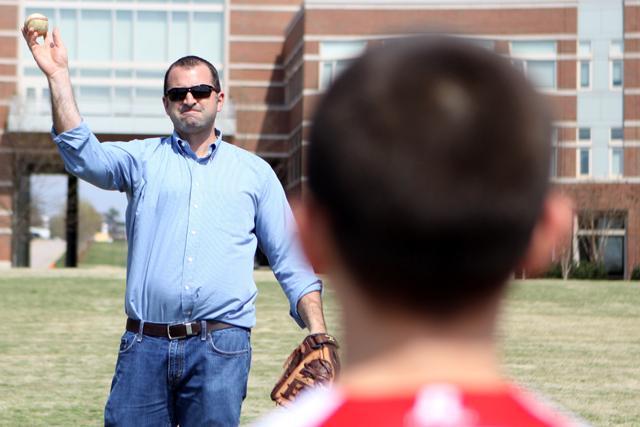Have you ever wondered where that brilliant idea that just leaped out of your brain and onto your paper came from? We’re not talking about brain waves and neural pathways. This is all about “ideation,” the process of forming a thought, conception or notion.
This is exactly what Andrew DiMeo , a senior design instructor in Biomedical Engineering, knew he would cover the moment the was asked to present at a TEDx event.
Thousands in the area attended the event on February 25 at Wake Forest Chapel.
“It was a great event, a lot bigger than I expected, but I think everyone understood what I was trying to convey – which was the important thing,” DiMeo said. “I wanted to help change the world by exploring how each of us can increase our chances of coming up with good ideas.”
Instead of talking about the evolution of an idea, DiMeo wanted to reach back, dig deeper and explore the actual birthplace of a good idea.
DiMeo calls his process “Ideation through Enlightened Empathy,” and it starts with setting the stage.
Twenty years ago, DiMeo studied mechanical engineering at Stevens Tech College. He also found himself paying for college by working as a set dresser in the New York City motion picture industry.
“I am walking to calculus class and my pager goes off… I find the nearest pay phone and hear that they need an extra pair of hands on a set of Marissa Tomei lingerie scene. At 19 years old, Marissa Tomei in lingerie beats out calculus any day of the week… needless to say, I dropped out of school.”
It was there where DiMeo learned that “setting the stage” is the first step in any decision.
“I got a 1.0 GPA one semester, failed out of college and still managed to become a professor with a Ph.D. I could successfully say, my stage was set,” DiMeo said.
Not only did DiMeo become a professor, he sets expectations his students would find in an industry setting. He said he tries to guide future biomedical engineers through the gates of college life and into the sea of the real world.
“I wanted to make the course as real life as possible,” DiMeo said. “I brought in concepts such as the FDA Quality System Regulations and project deliverables, but more importantly, I wanted the students to have a sense of intrinsic motivation by giving them an opportunity to work on real unmet medical needs that they personally identified, defined and solved.”
His pure ideals were shown in the rest of his process.
“It’s called ‘Ideation through Enlightened Empathy’ for a reason,” DiMeo said. “Knowing the voice of the customer is critical … whether you are making a medical device or solving a homework problem, you have to ask yourself who you are doing it for.”
The enlightenment part comes in with the customer.
“However, remember the customer will always want a faster horse,” DiMeo said. “I always suggest walking in the shoes of your customer, but at the same time always be naïve about them as well.”
The empathy comes from curiosity. DiMeo recommends pursuing inspiration or diversion so the mind can process abstract thoughts. Being childish can’t hurt, either.
“If you want to come up with good idea… set the stage, go on a journey and immerse yourself. Find a way to dream with youth-like innocence… and then I promise, your water cooler talks and coffee shop meetings will become the birthplace of great ideas,” DiMeo said.
DiMeo joked he will start making his 50 minute lectures into a compact 18 minutes, the time limit for a TEDx Talk, for his students benefit.
For DiMeo’s full video, visit www.tedx.com.








